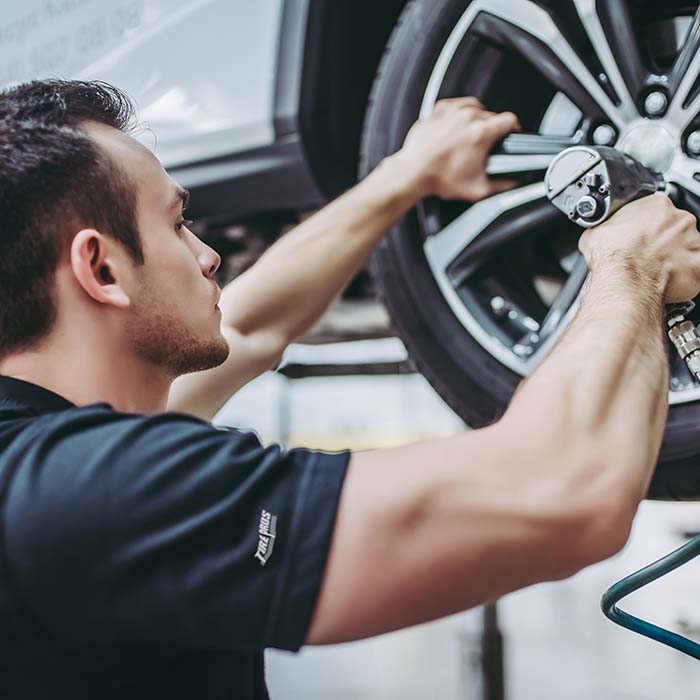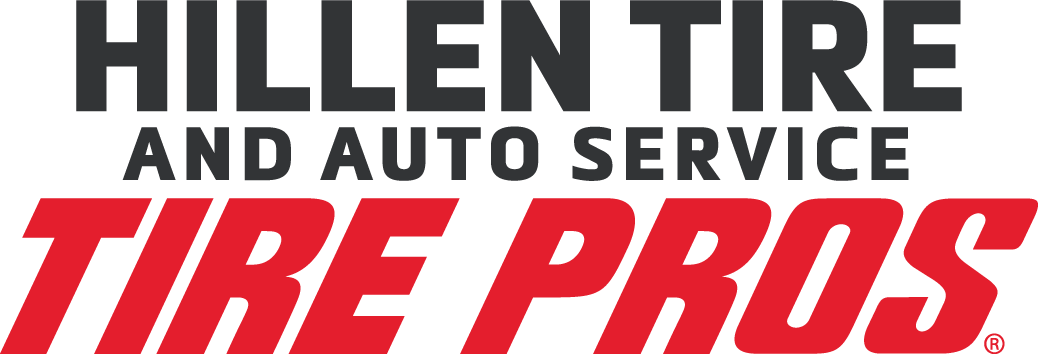Wheel Alignment in Timonium, MD
The Best Wheel Balancing Services in Timonium, MD
Discover precision wheel alignment services at Hillen Tire and Auto Service Tire Pros in Timonium, MD. Our long-standing legacy of providing exceptional auto services since 1917 speaks to our commitment to quality and customer satisfaction. Contact us today to schedule your appointment and drive with confidence.

What Is Wheel Alignment?
Wheel alignment is the adjustment of the angles at which a vehicle’s wheels meet the road surface. This process ensures that the wheels are properly positioned in relation to each other and perpendicular to the ground. Correct wheel alignment enhances tire longevity, vehicle stability, and overall driving performance by preventing uneven tire wear, improving handling, and maintaining a straight trajectory.
Signs You Need Wheels Aligned
Several signs indicate that your vehicle may need a wheel alignment. The signs include:
- Uneven Tire Wear – Excessive wear on your tires’ inside or outside edges indicates
- Steering Pulling – If your vehicle drifts or pulls to one side, even when driving on a straight road, it could indicate improper alignment.
- Crooked Steering Wheel – When the steering wheel is off-center or not aligned with the vehicle’s direction, it suggests the need for alignment.
- Vibration or Steering Wheel Shimmy – A vibrating or shaky steering wheel might be due to misaligned wheels, especially at higher speeds.
- Handling Issues – Difficulty maintaining a straight course, erratic handling, or a sensation of “wandering” could indicate alignment problems.
- Squealing Tires – Misaligned wheels can cause tires to drag against the road, leading to squealing noises while driving.
Recognizing and addressing these signs promptly can help you avoid further damage to your tires and suspension components while ensuring a safer and more comfortable driving experience.
Types of Wheel Alignment
There are three primary types of wheel alignment. They are:
- Front-End Alignment – Also known as a “toe and go” alignment, this focuses on adjusting the angles of the front wheels. This type of alignment is suitable for vehicles with a non-adjustable rear suspension.
- Four-Wheel Alignment – This comprehensive alignment type involves adjusting all four wheels’ angles – front and rear. Four-wheel alignment provides a more accurate alignment for all wheels and is suitable for vehicles with adjustable rear suspensions.
- Thrust Alignment – Also called a “thrust angle alignment,” this focuses on aligning the rear wheels to the vehicle’s centerline. This type of alignment is suitable when the rear wheels are not adjustable for camber or caster.
Choosing the appropriate type of alignment depends on your vehicle’s suspension design and the alignment issues you’re experiencing. A professional mechanic can recommend the best type of alignment based on your vehicle’s specifications and alignment needs.
Why Are Wheel Alignments Important?
Wheel alignments are crucial for maintaining optimal vehicle performance and safety. Properly aligned wheels ensure even tire wear, extending tire lifespan and reducing frequent replacements. Precise alignment improves fuel efficiency by reducing rolling resistance, leading to cost savings over time. Moreover, accurate wheel alignment enhances steering responsiveness and handling, providing better control and a smoother ride. It also contributes to safe driving by preventing issues like drifting, pulling, and uneven braking. Regular wheel alignments help maximize tire investment, promote stability, and ensure a safer and more efficient driving experience.
ADAS & Wheel Alignment
Advanced Driver Assistance Systems (ADAS) play a crucial role in modern automotive technology, enhancing vehicle safety and overall driving experience. These systems encompass features such as lane departure warning, adaptive cruise control, collision avoidance, and more. The relevance of ADAS to wheel alignment lies in the intricate interplay between these safety systems and the accurate alignment of a vehicle’s wheels. Misaligned wheels can compromise the accuracy of these systems, leading to false readings and potentially reducing their effectiveness. Precise wheel alignment ensures that the sensors are aligned with the vehicle’s intended direction, enabling ADAS to operate with accuracy.
How Often Should Wheel Alignment Be Done?
Wheel alignment should be performed as part of regular vehicle maintenance, typically every 6,000 to 12,000 miles (9,600 to 19,200 kilometers) or once a year, depending on driving conditions and manufacturer recommendations. However, it’s essential to monitor your vehicle for signs of misalignment, such as uneven tire wear, steering pulling to one side, or a crooked steering wheel. If you encounter these issues, it’s advisable to have your alignment checked and corrected promptly to prevent further complications. Additionally, wheel alignment should be performed after any significant impact or modification that could affect the suspension or steering components. Regular alignment helps ensure tire longevity, efficient fuel usage, improved handling, and overall driving safety.
Contact Us for Our Experience and Reputation
Choose us at Hillen Tire and Auto Service Tire Pros for your wheel alignment needs because of our extensive experience and impeccable reputation. Since 1917, we’ve provided top-notch auto repairs and tire replacements in Lutherville Timonium, MD. With a state-of-the-art facility and a legacy of excellence, you can trust us to ensure your vehicle’s alignment is precise and reliable. Contact us today for all your automotive needs.
